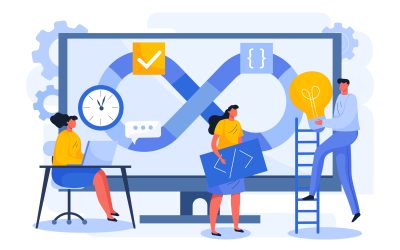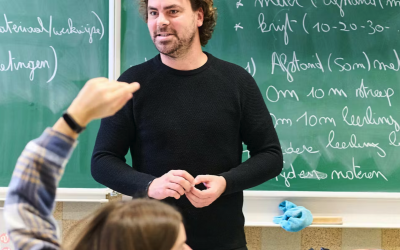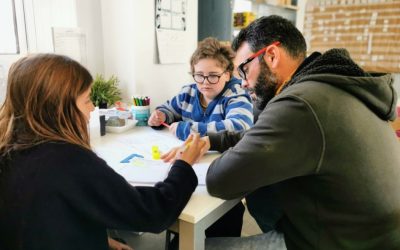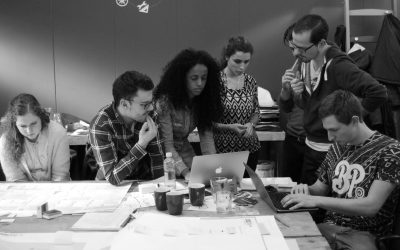In this post, we explore one of the most theoretically grounded topics in learning. This is Self-Directed Learning (SDL). At first glance, we might think that self-directed learning means that the student chooses a topic and starts to learn about it. But SDL goes much further.
What is Self-Directed Learning?
The concept of SDL originated in adult education. SDL therefore involves knowing what to learn, how to learn it and being able to assess whether it has been learned. It assumes that learners have a role in selecting the learning tasks that meet their needs (Loyens et al., 2008).
There is research to support the development of SDL as a methodological strategy. For example, in secondary vocational education (Kicken et al., 2009). Also in learning to write (Aghayani & Janfeshan, 2020) or, as shown in the systematic review by Prins (2007), with medical students.
What does this remind us of?
After reading the above lines, it is impossible not to think of a basic concept in learning: Self-Regulated Learning (SRL). It covers cognitive, metacognitive, behavioral, action, motivational and emotional/affective aspects of learning (Zimmerman, 2002). It is therefore an extraordinary umbrella under which a considerable number of variables that influence learning (e.g. self-efficacy, volition, cognitive strategies) are studied within a global and holistic approach (Panadero, 2017). SRL is therefore the process by which learners monitor and control their cognition, motivation and behavior in order to achieve specific goals.
In a rapidly changing world, successful individuals need to be lifelong learners, metacognitive and able to effectively assess their learning. In addition, students who do not learn self-assessment strategies will not be able to effectively focus their attention where it is most needed. Self-regulation also reinforces the content of learning. Self-regulation practices improve the encoding of knowledge and skills in memory, particularly in reading comprehension and writing. Research has also found that self-regulation strategies are associated with increased student effort and motivation, higher standardized test scores, and overall classroom readiness (Zimmerman, 2002).
How can the two be in harmony?
In today’s world, lifelong learning is more important than ever. Therefore, self-regulation and self-direction skills are considered essential for success, and it is crucial that students learn these skills in school. Moreover, by promoting self-regulation and self-direction, we can improve learning and increase motivation, which is a win-win situation for everyone involved. Therefore, in self-directed learning, the learner takes the initiative by setting their own learning goals, identifying assessments for feedback and seeking resources to help them achieve their goals. As a result, the role of the teacher changes from traditional instructor to facilitator of the learning process. With SDL, learners gain control, confidence and self-belief, resulting in increased motivation and a greater sense of empowerment (Sitzmann & Ely, 2011).
Not everything works:
As we have seen in the previous sections, SDL is characterized by learners making their own decisions in learning by developing skills such as metacognition or self-assessment, a skill that is included in SRL. However, as Kirschner & Hendrick (2020) point out in their chapter in the book ‘How learning happens’, students who do not have some prior knowledge about a task, topic or content will find it very difficult to construct new learning. For this reason, less guided methodologies may be less effective than guided ones.
Instead, self-regulated learning, which involves appropriate actions such as providing clear instructions, breaking down complex tasks into smaller, progressive steps, or providing monitoring tools such as rubrics, Kanban boards, and involving learners in their creation, can be a good starting point for ensuring the implementation of SRL with learners (Rosenshine, 2012).
Should less guided methodologies be the villains?
The answer is NO. A recent study entitled “The case for combining inquiry-based and direct instruction” (de Jong et al., 2023) supports the idea of combining direct instruction methodologies such as SDL with inquiry-based learning methodologies.
This review study shows that inquiry-based instruction outperforms direct instruction in the acquisition of conceptual knowledge, although there are no significant differences. In addition, benefits are observed in students’ intrinsic motivation when using inquiry learning, and they can achieve higher levels of self-efficacy and preparation for future content they wish to acquire.
Conclusions
In summary, the scientific evidence is strong and clear in support of SDL and SRL as effective learning strategies. They outperform others, such as inquiry learning, when students’ self-efficacy is low or the content is very new to them. However, it seems to be a mistake to neglect less guided methodologies as they can be more effective in acquiring and improving certain knowledge and skills. A good solution seems to be a combination of both.
References:
1. Aghayani, B., & Janfeshan, K. (2020). The effect of self-directed learning on EFL learners’ writing performance. International Journal of Research in English Education, 5(3), 78-89.
2.de Jong, T., Lazonder, A. W., Chinn, C. A., Fischer, F., Gobert, J., Hmelo-Silver, C. E., Koedinger, K. R., Krajcik, J. S., Kyza, E. A., Linn, M. C., Pedaste, M., Scheiter, K., & Zacharia, Z. C. (2023). Let’s talk evidence–The case for combining inquiry-based and direct instruction. Educational Research Review, 39, 100536.
3.Kicken, W., Brand-Gruwel, S., Van Merriënboer, J., & Slot, W. (2009). Design and evaluation of a development portfolio: How to improve students’ self-directed learning skills. Instructional Science, 37, 453-473.
4.Kirschner, P., & Hendrick, C. (2020). How learning happens: Seminal works in educational psychology and what they mean in practice. Routledge.
5.Loyens, S. M., Magda, J., & Rikers, R. M. (2008). Self-directed learning in problem-based learning and its relationships with self-regulated learning. Educational Psychology Review, 20, 411-427.
6.Panadero, E. (2017). A review of self-regulated learning: Six models and four directions for research. Frontiers in Psychology, 8, 422.
7.Prins, J. T., Gazendam‐Donofrio, S. M., Tubben, B. J., Van der Heijden, F. M., Van de Wiel, H. B., & Hoekstra‐Weebers, J. E. (2007). Burnout in medical residents: a review. Medical Education, 41(8), 788-800.
8.Rosenshine, B. (2012). Principles of instruction: Research-based strategies that all teachers should know. American Educator, 36(1), 12-19.
9.Sitzmann, T., & Ely, K. (2011). A meta-analysis of self-regulated learning in work-related training and educational attainment: what we know and where we need to go. Psychological Bulletin, 137(3), 421.
10.Zimmerman, B. J. (2002). Becoming a self-regulated learner: An overview. Theory into Practice, 41(2), 64-70.
Image by rawpixel.com on Freepik. Source : https://www.freepik.com/free-photo/learn-learning-education-studying-concept_16445422.htm#query=self%20directed%20learning&position=2&from_view=search&track=ais











0 Comments